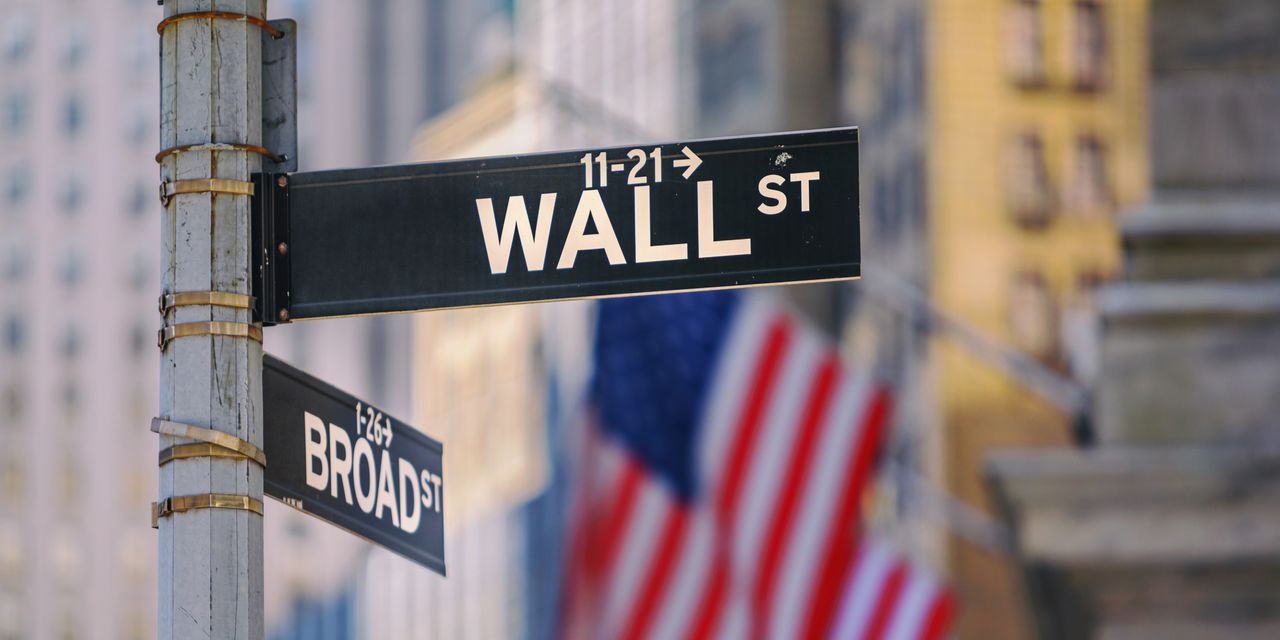U.S. banks and regional banks fell across the board on Tuesday, after S&P Global Ratings downgraded five smaller players after a review of risk related to funding, liquidity and asset quality with a focus on office commercial real estate.
Adding to the gloom, Republic First Bancorp. Inc.’s stock
FRBK,
tanked by 39%, after Nasdaq told the company that its stock would be delisted on Wednesday, after it failed to file its annual report in time.
S&P’s move comes just days after Fitch Ratings analyst Christopher Wolfe reduced his operating environment score for U.S. banks to aa- from aa due to the unknown path of interest rate hikes and regulatory changes facing the sector.
And Moody’s Investors Service just two weeks ago upset investors when it downgraded some lenders and said it was reviewing ratings on bigger banks, including Bank of New York Mellon
BK,
State Street
STT,
and Northern Trust
NTRS,
For more, see: Bank asset quality, weaker profits spark Moody’s reviews and downgrades as it weighs potential 2024 recession
The S&P 500 Financials Sector has fallen for seven consecutive days, and is on pace for its longest losing streak since April 7, 2022, when it also fell for seven straight trading days.
Individual bank names are also performing poorly, with Goldman Sachs Group Inc.
GS,
and Citigroup Inc.
C,
down for 10 of the past 11 days and Charles Schwab Corp.
SCHW,
down 11 straight days.
Goldman alone has fallen for seven straight days for a total loss of 6.3%. It’s the longest losing streak since Feb. 28, 2020, when it also fell for seven straight days as the pandemic was taking hold.
The KBW Nasdaq Regional Banking Index
KBWR
is down for 11 straight days. and the KBW Nasdaq Bank Index
BKX
is down for seven straight days.
S&P downgraded Associated Banc. Corp.
ASB,
Comerica Inc.
CMA,
KeyCorp
KEY,
UMB Financial Corp.
UMBF,
% and Valley National Bancorp.
VLY,
by one notch and said the outlook on all five is stable.
Read also: More challenges await U.S. banks but analysts think the worst may be over for the year
The rating agency affirmed ratings on Zions Bancorp
ZION,
and maintained a negative outlook, meaning it could downgrade them again in the near-term. And it affirmed ratings and a stable outlook on Synovus Financial Corp.
SNV,
and Truist Financial Corp.
TFC,
“We reviewed these 10 banks because we identified them as having potential risks in multiple areas that could make them less resilient than similarly rated peers ,” S&P said in a statement.
“For instance, some that have seen greater deterioration in funding—-as indicated by sharply higher costs or substantial dependence on wholesale funding and brokered deposits—-may also have below-peer profitability, high unrealized losses on their assets, or meaningful exposure to CRE.”
The steep rise in interest rates orchestrated by the Federal Reserve over the past year has raised deposit costs as banks are now competing for savers seeking higher returns and that’s forced some to pay up on deposits and discourage their clients from heading to other institutions and instruments.
The sector has been skittish this year following the collapse of Silicon Valley Bank and other lenders that led to a run on deposits at a number of regional lenders.
However, S&P said about 90% of the banks it rates have stable outlooks and just 10% have negative ones. None have positive outlooks.
The widespread stable outlooks shows that stability in the U.S. banking sector has improved significantly in recent months.
S&P is expecting FDIC-backed banks in aggregate to earn a relatively healthy ROE of about 11% in 2023.
KeyCorp. and Comerica both fell more than 3% on the news. Of the two, KeyCorp. has more outstanding debt and its 10-year bonds widened by about 5 to 10 basis points, according to data solutions provider BondCliq Media Services.
As the following chart shows, the bonds have seen better selling on Wednesday with buyers emerging around midmorning.
The next chart shows customer flow over the last 10 days.
The next chart shows the outstanding debt of the downgraded banks, with KeyCorp. clearly the leader with almost $16 billion of bonds.
Don’t miss: Capital One confirms roughly $900 million sale of office loans as property sector wobbles
Read the full article here













Leave a Reply